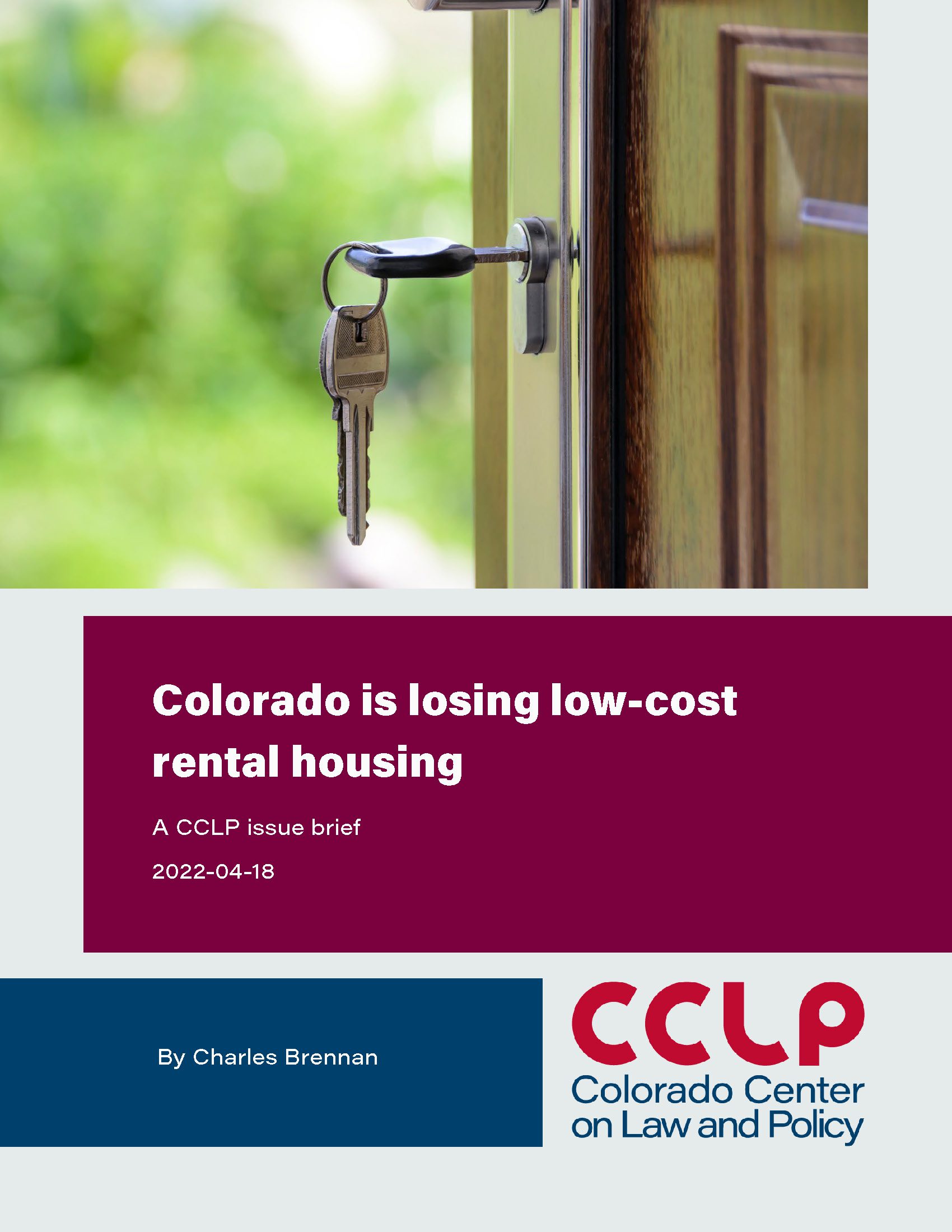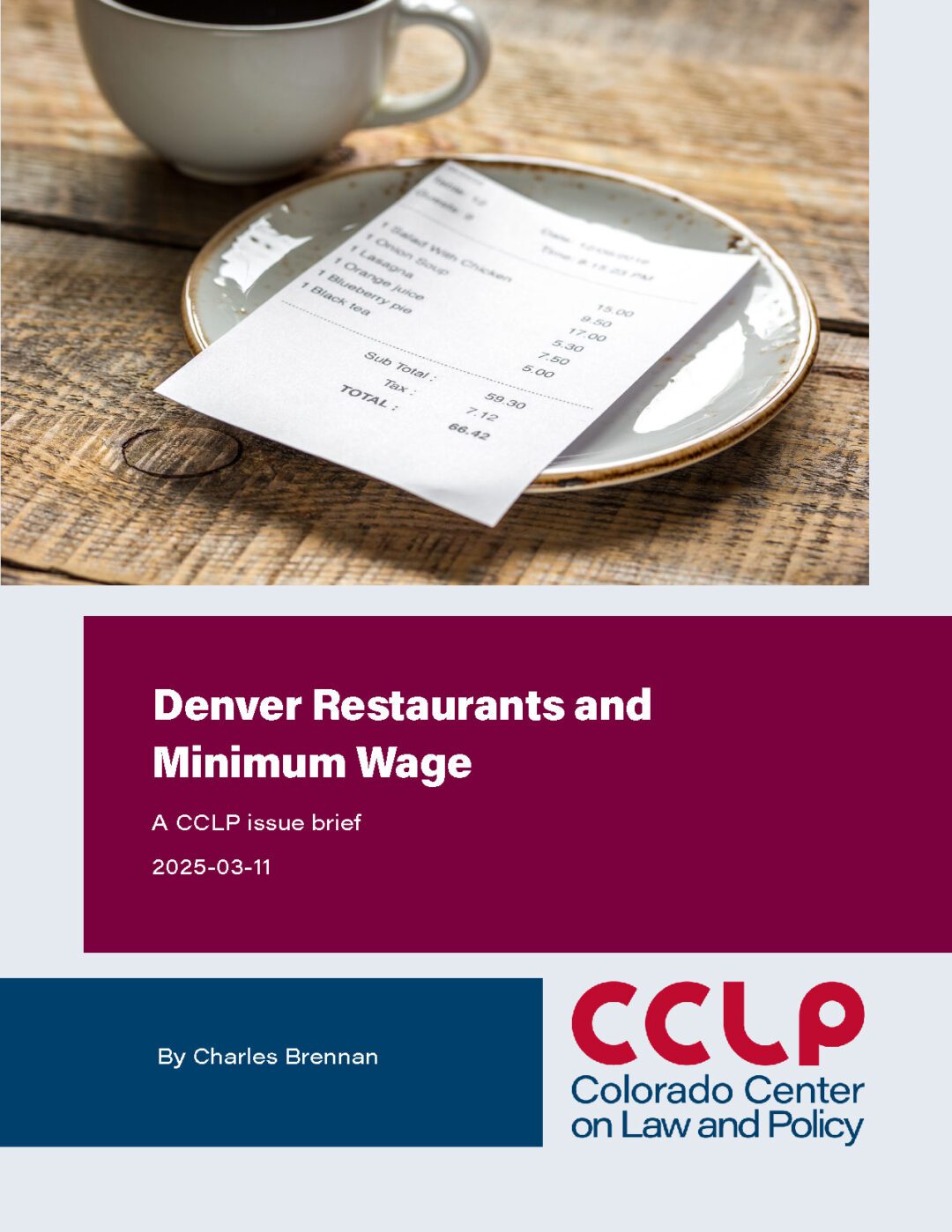Here we follow the JCHS’s definition of “low-cost” as rental units that had a monthly contract rent below $600. Rents below $600 would be affordable to renter households with annual incomes up to $24,000 in 2019. Approximately 23.0% of Colorado renter households had annual household incomes below $24,000 that same year. Using a more familiar metric in affordable housing parlance, $24,000 was equivalent to approximately 25.9 percent of area median income (AMI) in the Denver-Aurora-Lakewood metropolitan area for a household of four and 36.9 percent of AMI for a household of one.
Resources & Publications
Resource type
Authors
Date added
Filed under
Issue Brief: Colorado is losing low-cost rental housing






